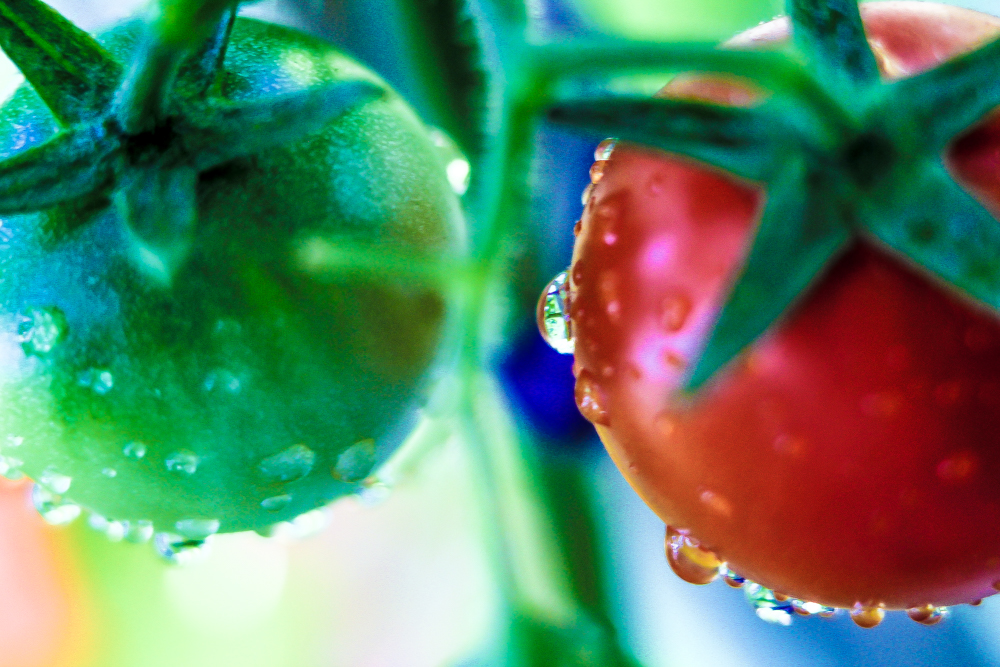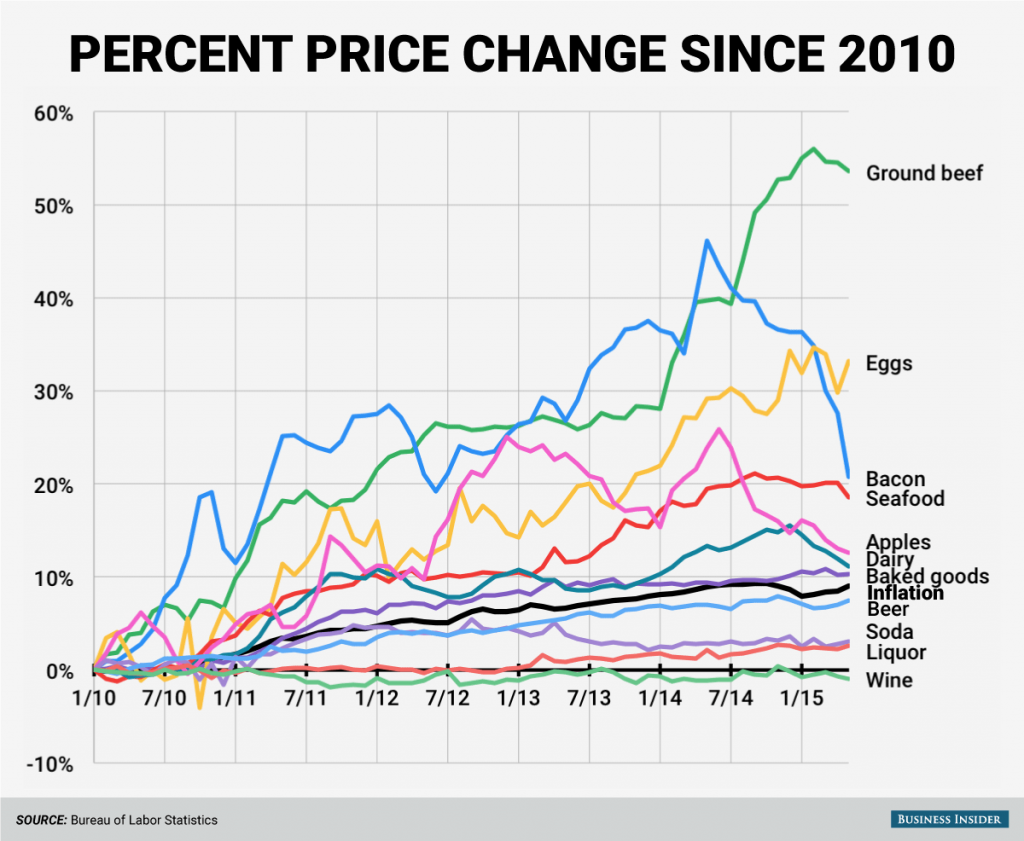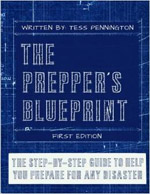
Food freedom – now that’s a loaded statement. Is there such a thing? How many of you go to the store every week to get produce and meat? I would venture to guess almost all of us. Over the last several years, a substantial amount of our wealth has gone into purchasing food staples like meat, eggs and dairy. Even though we were “technically” making our way out of the recession of 2008, prices still continued to steadily rise. I was even more frustrated when country of origin labels were removed and serious health-related superbugs were present in packaged meat.

For years, I have placed a lot of focuson finding ways to be more sustainable. I was tired of living a life in a dependency-driven system and wanted to make more sustainable choices. Admittedly, I still go to the grocery store, but I have taken significant strides to break away from it. I no longer purchase meat, eggs and most produce. I either raise my own food sources or find them locally. This has saved us from the ever volatile price increases of grocery stores that many are dealing with.
I also made some drastic changes around the house. While many believe the first steps toward food freedom are the most difficult to take, I found them to be the most rewarding and only encouraged me to be bolder in my pursuits. In a long-term emergency scenario, I knew that I needed the land I have to work for me. Therefore, I started raising my own food sources. The following are four of the easiest steps to take to become more sustainable in raising one’s own food and can be done in the convenience of a backyard.
Four Ways to Start Achieving Food Freedom
- Start a garden. It makes no difference if your backyard is big or small, you can grow vegetables. Growing your own vegetables is a fast way to take the necessary steps toward breaking up with the grocery stores. Think about it – you will know exactly where your food comes from and how it was raised. Consider growing open-pollinated heirloom quality seeds so you have more seeds for subsequent harvests. As well, you could even regrow food from food scraps like celery bottoms, green onions and carrot tops. Food freedom is all about getting creative and using what you have. There are a few things you need to do before you plant your garden, but for the most part, this is a great weekend activity. These tips can help your garden thrive.
- Have a water source. I understand that many of us are dependent on municipal water sources, but those sources of water can easily become contaminated and shut off altogether; especially during an emergency. Just look at the water crisis occurring in Flint, Michigan. If you are not lucky enough to have a year-round creek or be walking distance from a natural water source, consider installing water catchment barrels around your home. I have two creeks on my property, but they dry out in the summertime, so I purchased four catchment systems like these to collect the rainwater we get in the spring. For under $300, you can start collecting water; and trust me, the water will collect quickly. If apartment dwellers have access to rooftops, they can even take advantage of this. Here’s a great primer on how to get started harvesting your own water. As well, Daisy Luther wrote a book about everything you need to know about water.
- Get some chickens. Chickens are the gateway livestock that leads to homesteading. Aside from the initial investment of purchasing a brooder lamp, feeders, waterers and feed, they are relatively inexpensive. As well, they provide meat, eggs and nitrogen-rich fertilizer (make sure you compost the fertilizer before using). These are some of the most popular breeds to start with. As well, I like that I can give chickens kitchen scraps instead of throwing them away. They are, by far, the easiest livestock choice to start out with. As long as you give them a place to roost at night and bugs and grass to eat, they basically take care of themselves. There are lots of diy plans out there for coops, or if you are short on time, you can purchase a chicken coop like this one at feed stores. I also raise rabbits and because they make no noise, this could be a viable option for those living in close quarters of other families. As well, the manure makes great fertilizer!
- Buy some fruit trees. I realize that there are some who do not have enough backyard space for a fruit orchard, but if you get the right type of fruit tree, you won’t need a lot of space. Self-fertile dwarf variety fruit trees can easily become prolific producers of fresh fruit and can also lure wild game for hunting into your neck of the woods. Also, if you have a sunny area of the home, consider adding some fruit trees that can be grown indoors. Because I live in a more northern climate, I have two pomegranate trees that I keep indoors and will hand-pollinate the blossoms myself. I also have a lemon and orange tree that are in containers that can easily be brought indoors if need be. Look around locally to find quality dwarf variety fruit trees that are self-fertile and you can train them to be small but abundant.
Anyone Can Do It
With these four steps, you are essentially creating your own microfarm. If you have a yard, then you can take these steps. In fact, Jules Dervaes proved years ago that you can raise your own food sources on 1/5th of an acre. He says that “growing your own food is recession proof. You don’t have to worry about the prices.”
While I live on acreage, the amount of land I use for these sustainable pursuits are very small. Moreover, I found the steps listed above to be the most rewarding and cost efficient ways to get started. Once your endeavors take off, consider how much additional food you will have. This could be great additional income sources or bartering tools that could be used.
Farms. Food. Freedom. It’s That Simple, Folks
To conclude, I ask again, is there such a thing as food freedom? The answer is yes; but you must be ready to work for it. The four steps outlined above are the most efficient course of action towards sustainability and if you have a small plot of land, you can make this happen.
Tess Pennington is the author of The Prepper’s Blueprint, a comprehensive guide that uses real-life scenarios to help you prepare for any disaster. Because a crisis rarely stops with a triggering event the aftermath can spiral, having the capacity to cripple our normal ways of life. The well-rounded, multi-layered approach outlined in the Blueprint helps you make sense of a wide array of preparedness concepts through easily digestible action items and supply lists.
Tess is also the author of the highly rated Prepper’s Cookbook, which helps you to create a plan for stocking, organizing and maintaining a proper emergency food supply and includes over 300 recipes for nutritious, delicious, life-saving meals.
Visit her web site at ReadyNutrition.com for an extensive compilation of free information on preparedness, homesteading, and healthy living.
This information has been made available by Ready Nutrition









